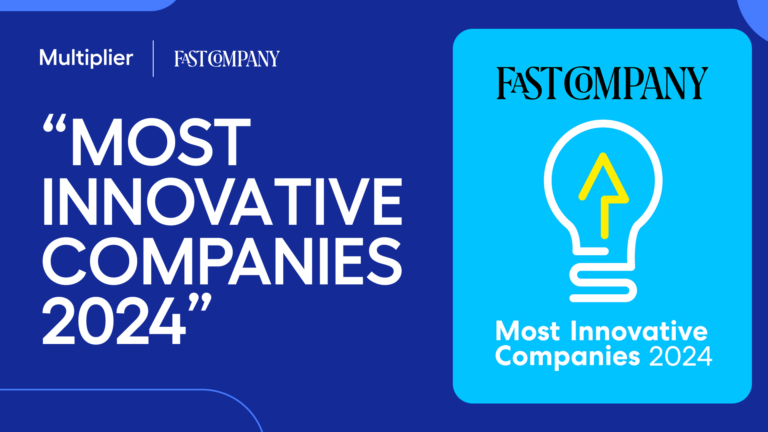The business world constantly changes, and today’s companies must evolve and innovate to compete. Technological advances and effective recruitment often inspire innovation, but neglecting the importance of employee development is bad for business. Oh, and it’s bad for your employees.
Employee development is excellent for improving efficiency, engagement, and professional growth. Investing in employees increases engagement and job satisfaction, helping you retain your most valuable people. A crucial factor considering around 64% of employees would likely leave their jobs due to a lack of skills development.
Let’s learn more about employee development and its value for businesses today and in the future.
What is employee development?
Employee development is improving your team’s skills, knowledge, and competence. Tailored training and development opportunities allow employees to explore their talents and professional passions. But also take their current skills to new levels.
Training and development are the same, right? Wrong. Training is a resource for learning and development, whereas the development process helps employees progress by upskilling. The aim is to bolster the business and achieve your goals, but employee development benefits employers and employees. It’s a win-win for everyone.
With that said, development means you have to invest time and money, but doesn’t everything in business? While this may be off-putting to some employers, those who embrace professional development reap the rewards in the long run.
“Learning experiences are like journeys. The journey starts where the learning is now
and ends where the learner is more successful. The end of the journey isn’t knowing more. It’s doing more.” – Julie Dirksen.
Take a note from Julie Dirksen, workshop facilitator for talent and learning organizations – the more your people know, the more they can do — a simple yet effective formula for improving your company.
Why is employee development important?
A lot has changed in recent years. There are new challenges, concerns, and urgency for growth and stability. For employees, there’s more need for flexibility, job satisfaction, and a real sense of purpose in what they do. This is why employee development is important and will always be. It allows businesses and professionals to be at their very best.
Employment has shifted from a “demand marketplace” to a “talent marketplace,” with 90% of employers predicting “meaningful “ skills gaps over the coming years. Companies aren’t just desperate to recruit the best talent but those with appropriate skills to hit the ground running. The reality is that it can be more effective to develop the best talent in-house.
When the time comes to recruit, what if no candidates possess the specific skills you need?
Here lies the importance of employee development and the ability to establish and build a team of experts. People already committed to your company who know the processes and increase engagement through progression.
Tailor your employee development plan
Employee development plans teach new skills, abilities, and insight for current roles – but you must also think of the future. Development is essential for advancing employees to future roles and senior positions. This benefits the employee and the business, as the former enjoy career progression, and the latter adds another homegrown superstar to their roster.
Before diving in head first and creating your employee development plan, here are a few things to remember.
- Skill gaps: This should be first on your to-do list. Analyzing current skill sets and identifying areas for improvement is critical. Doing so gives you a better idea of absent or underdeveloped skills and employees desperately seeking progression.
- Aligned goals: Employee development plans should be tailored for the learner but must also align with your business goals. Otherwise, what’s the point of the investment? Bridging the gap and finding shared goals is a brilliant way to maximize impact and productivity. Being committed to each other’s progression is a powerful motivational tool.
- Identify leaders: Whether it’s your intention or not, development plans help you to identify leaders. The people who want to evolve, hone their skills, and take on new responsibilities. The development journey is incredible for finding leaders to carry the company on their backs and always strive for more.
- Future talent: Just like anything, it’s rare to nail employee development immediately. It takes time and a few mistakes along the way. However, as you learn more about your employees and the skills required to achieve your goals, you’ll begin to create a blueprint for success. From here, talent growth can become a much more creative and consistent process.
Creating a robust, valuable employee development plan
Establish a learning culture
You may instantly be nauseated by the word “culture.” It’s thrown around so much online and in the workplace. Whether you love or hate the term, company culture makes people tick and often go the extra mile for each other. With this in mind, you need the same mindset with employee development.
An IBM study showed 84% of employees from the best-performing organizations receive the training they need, compared to the 16% from the worst-performing companies that don’t.
Rather than simplistic and mandatory training programs, establish a learning culture where people are excited and energized by the process, not just the pay bump. Implement training and development into employees’ work schedules and encourage them to practice and share their new skills with others. Learning on the job is a tried and tested approach, and for many employees, it may be more effective than conventional training.
A study, The State of Learning in the Flow of Work in 2022, revealed that 47% of respondents don’t have enough time to benefit from structured or tailored training. Don’t make the mistake of assigning tasks in addition to current workloads, disrupting your team’s workflow or free time. It won’t make you any friends, and engagement will dwindle. Create a holistic culture where learning, working, and continued development are cornerstones of your business.
Put your money where your mouth is
We’ve said it before in this article, but we’ll repeat it, employee development costs time and money. If you’re serious about teaching your employees new skills, you need to put your money where your mouth is and invest in learning. Not a backup fund to support your other ventures or fall back on in times of need. It’s for your team.
An assigned budget isn’t merely money. It’s a clear message to your employees that you’re prepared to invest in their future. And we’re not talking about compliance training and tips on not getting caught in a phishing scam, actual employee development with actual results.
Encourage ownership and progression, not perfection
While all businesses should strive for innovation and success, perfection is rarely attainable. Nor should it be an expectation for employee development. Learning is fuelled by mistakes and the ability to overcome challenges – as Nelson Mandela once said, “I never lose. I either win or learn.”
Encourage ownership of professional development with the goal of progression, not perfection. Even if there’s no clear roadmap, inspiring your employees to push boundaries and explore their capabilities is a journey worth embarking on. If we all left home in the morning and expected the day to be perfect, we’d all need a hug by lunchtime.
Aiming for perfection creates a pass-or-fail mentality. Do you want your employees to be creative and innovative or tick boxes to avoid failure?
Employee development and beyond with Multiplier
Employee development is just one of many challenges businesses managing a global workforce encounter. From ensuring correct and up-to-date tax documentation to overseeing global payroll and beyond, it takes time, and getting it wrong can be problematic. Not to mention, the time can be better spent developing your employees to achieve future growth.
The Multiplier platform enables businesses to easily hire global talent and serve as their employer of record. We take care of the tedious aspects of global employment, such as taxes, payroll, visas, benefits, and insurance — leaving you with all the fun stuff!
Are you looking to hire a global workforce whose development will drive your company into the future? Talk to our experts today!







